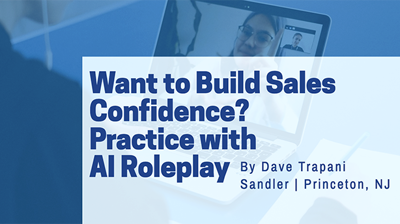Often, the easiest person to sell something to is the person you’ve already sold something to. We forget this sometimes. Perhaps that’s because of the terminology we use. It’s quite common for salespeople and sales managers to talk about “closing the sale” – but is that word “close” really the best way to describe what’s really happening when there’s a decision to purchase our product or service?
Of course, it’s unlikely that sales teams will stop using the word “close” to describe a prospect becoming a customer. But that doesn’t mean we have to think in terms of “closing” anything at this point in our sales process. The truth is, it makes no sense to view “closing a sale” as the end point of the development process (the culmination of the buyer-seller relationship). It makes much more sense to see this moment as the beginning point of a new relationship—a partnership.
Our new customer is a valuable source of two extremely important things: insights on how to make sure the delivery of the product or service unfolds seamlessly ... and referrals that could connect to additional business. Why wouldn’t we want to ask about both of those things? Why wouldn’t we want to hear the answers sooner, rather than later?
Strike While the Iron Is Hot: Delivery Issues Let’s look first at the issue of delivery. We may not be used to thinking of delivery as part of the sale ... but make no mistake, it is! If something goes wrong, we’re going to hear about it, and there are going to be consequences, financial and otherwise, that will have to be dealt with. We want to strike while the iron is still hot – and while we can still affect the outcome by designing the perfect “handoff.” We want to get all the information necessary to make sure both sides experience a seamless, trouble-free delivery. That means we want to be asking the right questions about delivery shortly after the customer says “Yes.”
For instance:
Who, on the customer’s side, will be most directly involved in facilitating the delivery of the product or service we just sold? What kind of timelines and deliverables are the people on the customer’s side expecting? What paperwork needs to be completed, and by when? Who do they need to talk to on our side? What are the most likely obstacles to a perfect delivery ... and how can we prepare for them ahead of time? We can’t assume we already know the answers to these questions!
Strike While the Iron Is Hot: Referrals Next, let’s look at the subject of referrals. This is something many salespeople avoid discussing with buyers in the period right after the buyer has said “Yes.” But if we stop to think about it, we’ll realize there is no logical reason to avoid raising the issue of introductions. There may be other departments or divisions within this company with which we should be in contact. Additionally, our contact is likely to know of other companies that could benefit from what we offer – and they may even have a relationship with people in those companies.
Some say it’s important to wait until the product or service is in place and the customer is happy before discussing add-on or future business. While waiting may make those salespeople feel more comfortable, it only delays the process. The time to “plant the seeds” for future business is soon after closing the first piece of business.
We can frame our question around a beneficial outcome for the client. What should be implicit in our question is the answer to the customer’s inevitable question, “What’s in it for me?”
For example: Tom, now that we have your Macklin warehouse squared away, I was thinking it might make sense to look at the Ellis warehouse to determine if there’s a way to improve inventory handling efficiency there as well. What do you think? Mary, now that the training for your marketing people is in place, would it make sense to explore what we can do to help your customer support people create a better experience for your customers?
In each of these areas – laying the groundwork for a perfect delivery and planting the seeds for future business – we have nothing to lose by asking — and everything to gain.
The SandlerBrief® e-newsletter is provided monthly by the Sandler® network of trainers. For more
information on training with Sandler, contact the sender of this newsletter.





